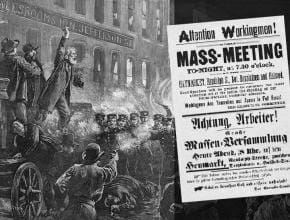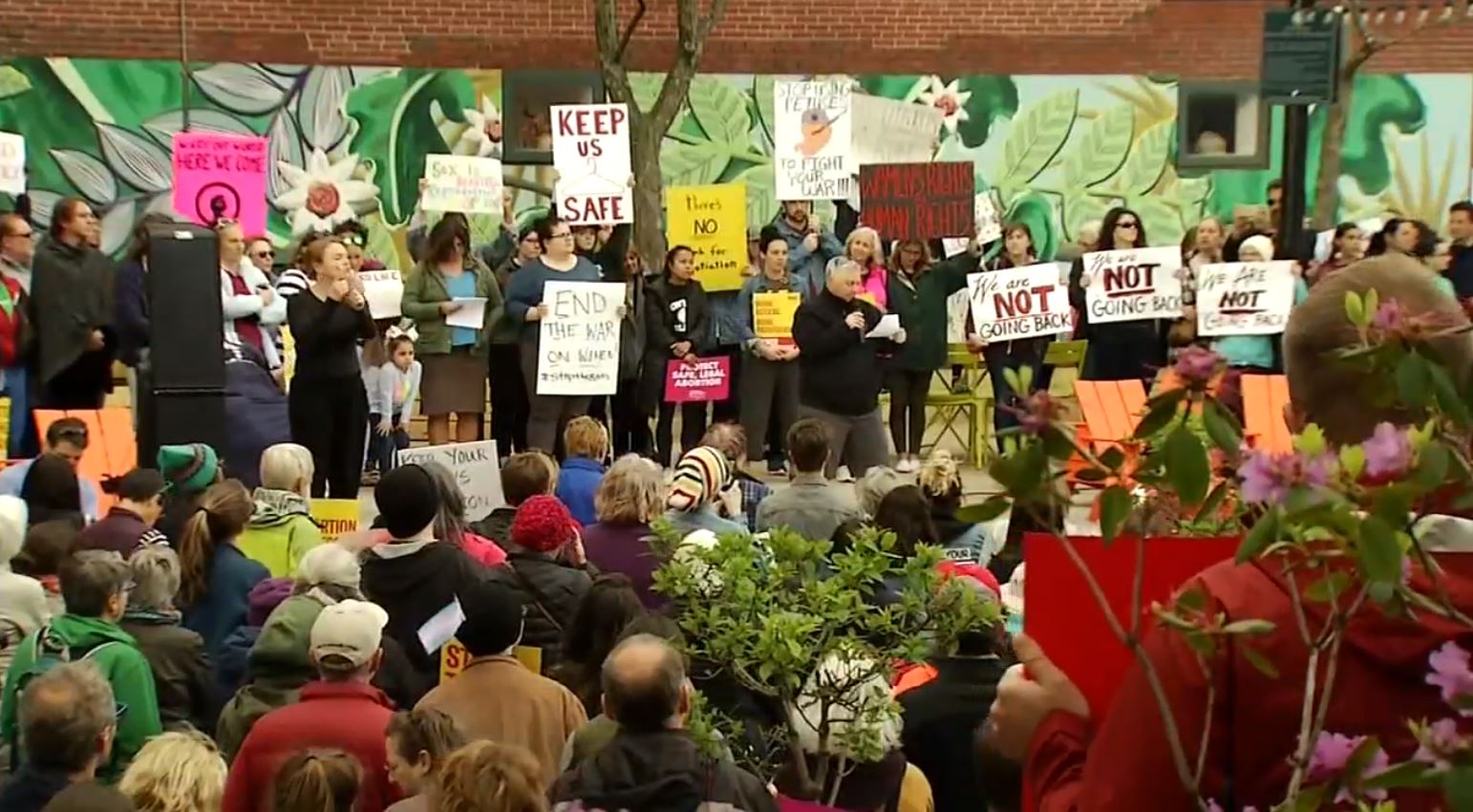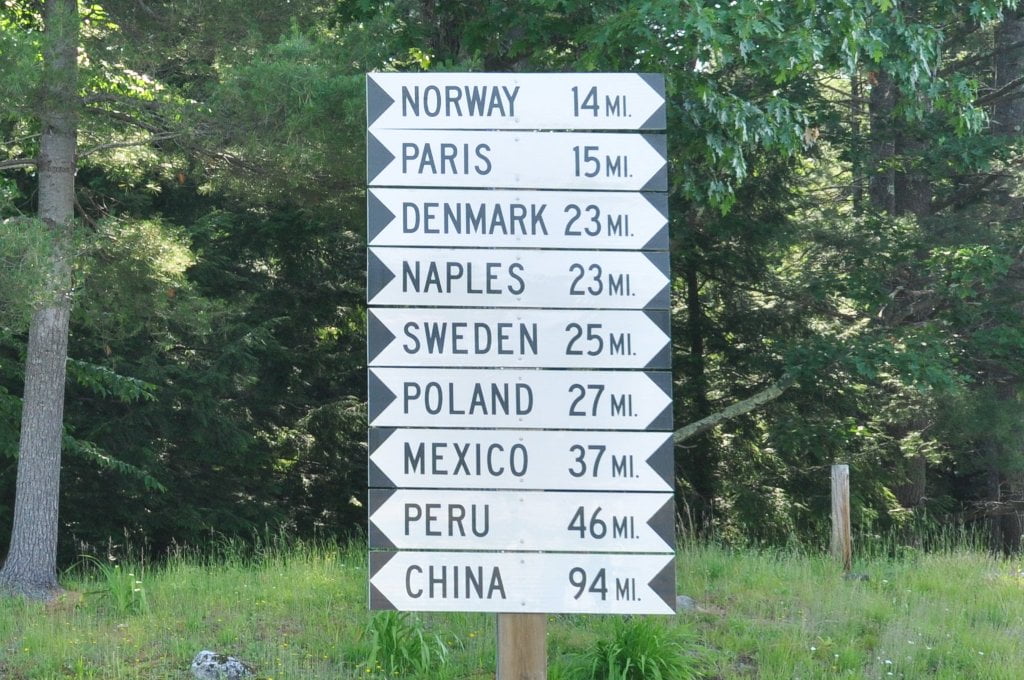I remember being the only kid in my 5th grade class at Pennell Elementary in Gray, Maine to vote for Jimmy Carter in 1980. Ronald Reagan promised to Make America Great Again and he beat Carter 489 to 49 in the electoral college that year. It got worse in 1984. Reagan nearly ran the table against Walter Mondale, who managed just 13 electoral votes from his home state of Minnesota. The popular vote was 54 million to 37 million. You read that right.
For those who had fought all their lives for civil rights, feminism, and peace, his election was a demoralizing and terrifying time. I was just a kid, but I could feel it too. Reagan made his bones in California as governor gassing anti-war protesters and staked his presidential campaign on White Supremacy, hailing States Rights in Mississippi where the Klan massacred civil rights organizers. In office, he smashed unions, mocked AIDS victims, bloodied whole nations in Central America, and pushed the world to the brink of nuclear war. It was bad.
Reaganomics

If Reagan mobilized a racist backlash against civil rights to win office, he cemented his grip on power by taming inflation, running at almost 15% by the time of the 1980 election. He teamed up with Fed Chief Paul Volcker to drive the U.S. into a steep recession in 1981 and 1982 by slashing budgets and hiking up interest rates. Unemployment spiked to over 10% with millions of jobs lost in manufacturing. Reagan portrayed the recession as tough medicine that would—coupled with a war on the unions—restore American business to world supremacy. Wall Street and Big Business loved it. Private sector unionization declined by 40% over the course of the 1980s. In capitalist terms, it worked like a charm. GDP growth stormed back to 4.5% in 1983 and 7.25% in 1984, then chugged along around 4% for the remainder of the decade.
When all was said and done, Reagan had won the Cold War, rearmed the Pentagon, rolled back abortion rights, affirmative action, and environmental protection, and imposed the neoliberal model on friend and foe alike across the world. George H.W. Bush rode to an easy victory in 1988, spreading Reaganism into the 1990s and looked set to extend its run even further in the wake of the 1991 Iraq War.
What finally undid the Reagan/Bush hold on the White House? As Clinton advisor James Carville put it, “It’s the economy stupid.” Post-war joblessness climbed to nearly 8% and that was just enough to put Clinton over the top in 1992. However, it’s worth remembering that billionaire Ross Perot won almost 20 million votes in his independent (rightward leaning) bid that year, so Clinton only won 43 million votes to Bush’s 39 million. The ghost of Ronald Reagan still haunted the country. Especially so considering that Clinton adopted much of Reagan’s anti-welfare and tough on crime rhetoric and policy.
The left in the 1980s
There were important social movements and leftwing campaigns in the 1980s and early 1990s. Millions marched for Earth Day, disarmament, abortion rights, and Central American solidarity. Campus occupations protested South African Apartheid and Los Angeles and other cities erupted in rebellion after Rodney King’s attackers were acquitted in 1992. And while labor took it on the chin, strikes like the paper workers’ battle in Jay, Maine demonstrated that unions could still put up a fight. Many of these impulses found political expression in Jesse Jackson’s 1984 and 1988 Democratic Party primary challenges, growing his left-wing vote from 3 million to almost 8 million in the darkest period of Reagan’s rule. However, the trend was clear. Feminism, civil rights, environmentalism, socialism, Indigenous sovereignty, disarmament were all on the decline and capitalism reigned supreme. Margerat Thatcher’s dictum “There is no alternative” rang true.
Fast forward. Is Trump just a return to Reagan? Yes and no.
Leftwing ideas are all more popular now—especially among young people—than in the 1980s. If Jackson’s campaigns brought together the remaining forces from the previous round of social movements, then Bernie’s campaigns gave a common language of socialism and solidarity to contemporary struggles whose trajectory has not yet been determined. Certainly, the NLRB will turn hostile under Trump, but there is more energy in the labor movement than we’ve seen since the 1960s. And if hundreds or thousands protested Reagan’s genocidal wars in Guatemala, El Salvador, and Nicaragua and demanded divestment from South Africa in the 1980s, tens of thousands and more are standing in solidarity with Gaza now. Today to be young and to fight for socialism seems pretty normal, just ask all the people you know in DSA. That’s a big change.
On the other hand, although Reagan’s margins were bigger than Trump’s, and Reaganism did help revive the far right—David Duke, the Grand Wizard of the KKK won a seat in the Louisiana legislature and Timothy McVeigh sprung from a widespread militia movement—Trump has brought together a kind of mass, participatory proto-fascist movement unlike anything Reagan ever managed (or cared about). That “movement” side of Trump—both its expression in the streets and its permeation of the state—is of a different order of magnitude and it might mean that Trumpism is more durable than Reaganism.
What about global capitalism? Reagan wanted to win the Cold War, but I don’t think he and his team really imagined the Soviet Union would collapse. That is, they wanted to rebalance the existing global structures in favor of U.S. business, which they did. But today’s fractured worldscape—led by mutually antagonistic strongmen on the one hand and imperial democracies on the other—the escalating ecological catastrophe, and the creeping substitution of “normal” political channels for demagogic freelancing all add up to a more precarious world order. It was unnerving to hear Reagan “joke” about nuking the Soviet Union in 1984 (“We begin bombing in 5 minutes”) but it is positively terrifying to consider the damage Trump can do with, as Kamala Harris liked to put it, the “world’s most lethal military.”
What now?
At the risk of oversimplification, three roads suggest themselves based on this reading of Reaganism v. Trumpism.
First, Trumpism could succeed in consolidating itself for a generation in terms of beefed up street (thug) power and control over the existing state. This is a very dangerous scenario and anyone who expects the CIA, the FBI, or the DNC to stand in its way ought to think twice. Deepening control over already Red state apparatuses and despotic inroads into Blue state defenses by means of Federal regulations, court rulings, and laws will radically restrict rights for whole groups of people and throw fuel on fire warming the planet. We might look to India today, or the U.S. before the end of Jim Crow, to see what this looks like. Not a totalizing Third Reich police state, but enough of a police state (with popular support) to change the terms. Just think about what things would be like under a second Vance Administration 2032-2036.
Second, Reagan’s Trickle Down economics initially juiced the economy making him a hero, but he couldn’t outrun the tendency of capitalism towards crisis and unemployment. Huge tax breaks for the rich, deregulation, and tariffs might lead to an economic boom for a time, Trump’s fabled “greatest economy in the history of the world.” But it will inevitably run out of steam, if it ever materializes at all. This expectation will determine the DNC’s strategy. The Democratic leadership will move to the (imaginary) center, “look for common ground,” and wait. They will denounce “extremists” in the Democratic Party and look for a new Bill Clinton. Despite all the damage 4, 8, or 12 more years of Trumpism might do, the Democrats will wait it out. And, in terms of the DNC elite coming back to power, it might work. Heck, it might even work in terms of winning the House or the Senate back in 2026 or even the presidency in 2028. And it’s always possible that Trump will follow Reagan into rapid mental and physical decline during his administration but before Vance is able to consolidate his own position as cult leader, touching off a bruising fist fight inside the Republican Party.
Third, there is the potential to replace Trump from the left. This could come in two shapes that I can think of. Either a left-wing populist is able to tap into a series of Trump missteps and disasters and run a short road to electoral victory. The U.S. electoral system cheats against this possibility and the DNC will be patrolling to head it off. But the bigger problem is that Bernie has no heir apparent with either his stature or political skills.
Or the left charts a longer-term strategy for creating a genuine working-class movement rooted in workplaces and neighborhoods, oppressed communities and Indigenous Nations, and schools and universities. This strategy will face repression, cooptation, and internal debate and it will require many years if it is to grow powerful enough to accomplish its goals. And, truth be told, it is probably the least likely scenario presented here to succeed. But I can’t see another way out. Can you?




